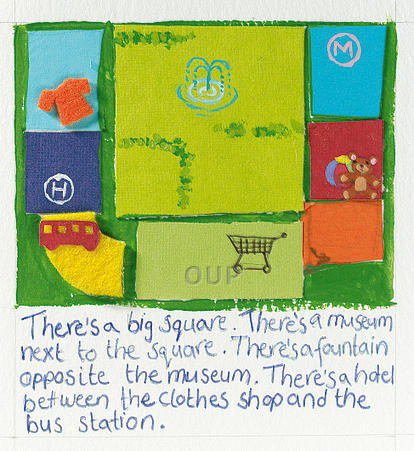 Tom Hutchinson, author of Project, considers how using project work in the English language classroom helps to inject some ‘Serious Fun’ into learning.
Tom Hutchinson, author of Project, considers how using project work in the English language classroom helps to inject some ‘Serious Fun’ into learning.
In 2010 Project celebrated its 25th anniversary. It hardly seems that long since the original Project English first appeared, but I’m certainly reminded of time passing when I visit different countries to talk to teachers. It used to be the case that many of them would tell me how fond they were of Project because they had started teaching English with it. Now they’re more likely to tell me that they started learning English with it!
I’m often asked why the course (now in its third edition) has been so popular for so many years, and the 25th anniversary has given me the opportunity to reflect on that question…
I first got involved in writing textbooks in the early 1980s. It was a time when all sorts of new ideas about language and learning were coming out of universities and other teaching institutes around the world. It was an exciting time. Every year seemed to bring some new insight into how we might make our teaching and our materials more ‘communicative’.
It seemed to me, however, that in all this flood of ideas, one crucial element was missing. That was the simple, old-fashioned concept of ‘fun’. To put it simply: You can be absolutely spot on in terms of your syllabus and your task design; you may try to incorporate all the latest ideas about functional language and classroom methodology; but if the resulting teaching materials don’t engage learners’ interests, then you’re probably wasting your time. This is true for any learners, but it’s particularly important with younger learners.
In my opinion, any Young Learners’ coursebook must have at its heart things like:
- humour, through the use of such things as cartoon stories, jokes, games and puzzles;
- interesting topics from a whole range of subject areas – geography, history, science, art and literature;
- real-life characters and situations that the learners can relate to;
- ample opportunities for learners to play with the language and use it to express their own ideas.
Of course, you’ve got to get your syllabus and so on right, but to be successful, it must be combined with a methodology that focuses on interest and enjoyment. It’s an approach that I like to call ‘Serious Fun’.
A vitally important feature of this approach in Project, of course, is project work. People often ask me how I came up with the idea of using it. Well, I started my teaching career, not as a language teacher, but teaching history, where project work has been extensively used for a very long time. So when I started teaching English, it seemed natural to try project work out there, too. And it worked.
But why is project work so appealing? Let me answer that with a simple illustration. Imagine that you’re in a group of people and I take a photograph of that group. When I show you that photograph, I can say with absolute certainty what you will look at first. You will look at ‘the most fascinating thing in the world’ – You! And the same will go for everyone else in the group, because we’re all fascinated with ourselves, and in particular with how the world sees us. Project work simply taps into this fundamental human impulse. It says to the learners: ‘Tell the world about yourself – your daily life, your family, your country, your interests and dreams.’ Nothing can be more motivating than that!
So remember: Serious Fun! That’s what it’s all about!
Project now has it’s own area on our Facebook page! Over the coming months, we’ll be posting exclusive videos, blog posts, discussion topics, contests and more! Check out the Project Facebook page now!

